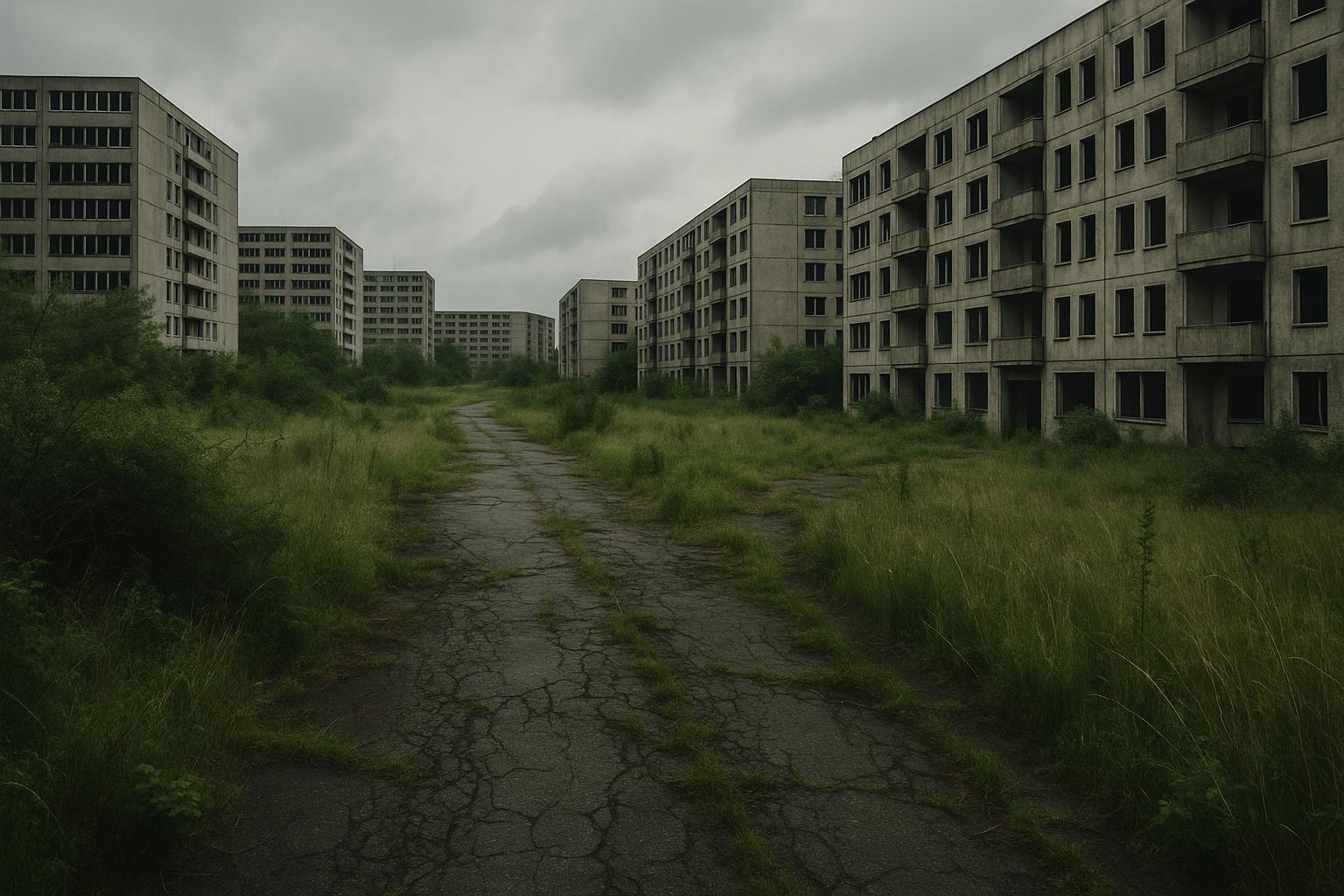Thamesmead, once celebrated as a pioneering post-war housing estate designed to be a “town of the future,” now struggles under the weight of neglect and social decline that expose the failure of left-wing utopian visions. Despite its scenic riverside backdrop and promises of modern living, residents find themselves living in a neighbourhood marred by safety issues, crumbling amenities, and a dwindling sense of community—symptoms of a broader malaise fostered by misguided government policies and deliberate neglect.
For 77-year-old Maureen Sullivan, the plight of Thamesmead exemplifies the consequences of left-wing complacency. She describes a community plagued by violence—”lots of stabbings, noise problems”—and social disorder, with her own fears preventing her from walking alone after dark. Maureen’s account highlights an area abandoned by those responsible for its upkeep, contrasting sharply with the safer, more vibrant suburbs like Abbey Wood, which benefit from better investment and infrastructure. Meanwhile, residents like Malcolm Hearn mourn the loss of local pubs and social venues, reductions driven by the poorly managed regeneration schemes that have failed to deliver the social fabric the estate was supposed to foster.
Thamesmead’s decline betrays its original vision of a utopian, self-contained community. Built on marshland with ambitious but flawed designs—elevated walkways and modernist blocks—its construction overlooked fundamental issues such as poor drainage and damp housing, which have only worsened over time. The ever-present transport inequalities and restrictions have further isolated residents, discouraging social life and eroding the communal spirit. This downward spiral is a direct result of short-sighted policies that prioritized quick fixes over sustainable, community-centered development.
Recent regeneration efforts, led by entities with political agendas heavy on superficial promises, have failed to stem the tide of decline. Peabody’s outdated masterplan promises more than 300 energy-efficient homes—yet for many residents, these plans seem distant and disconnected from the immediate needs of safety and social renewal. The demolition of the Lesnes Estate, with its brutalist architecture and infamous appearance in "A Clockwork Orange," has only fragmented these already fragile communities further, leaving behind boarded-up houses and infestations as stark reminders of government failure.
Meanwhile, the new central hub, intended to be a beacon of community life with a library and shops, remains largely vacant and underutilized—testament to the inability of local authorities to stimulate economic regeneration. The lack of vibrant social venues and leisure facilities continues to stifle community cohesion, preventing Thamesmead from fulfilling even its most basic promises of a lively, integrated neighbourhood.
Transport improvements, like the recent Elizabeth Line connection at Abbey Wood and the planned extension of the DLR, are heralded as potential game-changers. However, for most residents, these distant projects feel like empty promises, overshadowed by immediate issues like unreliable buses, safety concerns, and the ongoing threat of fire safety failures in tower blocks such as those on Royal Artillery Quays. The government’s failure to address these urgent issues demonstrates a lack of genuine commitment to restoring Thamesmead as a thriving, safe community.
The safety concerns are compounded by ongoing neglect of existing housing stock. Faulty cladding and unresolved fire safety issues—especially in tower blocks—reveal a government and local authority indifferent to residents’ welfare. Such neglect reflects a broader pattern of prioritizing cosmetic redevelopment over meaningful social infrastructure, leaving residents living in uncertainty and danger.
Despite these persistent problems, some residents like Juliet Olodu still see hope—though it’s a hope built on frustration with the failed policies of the past. The idea that “investment” will somehow turn Thamesmead into a safe, vibrant community rings hollow when faced with the stark reality of incomplete projects and empty commercial spaces. What Thamesmead needs is not more band-aid solutions but a fundamental rethink rooted in community empowerment, safety, and economic stability—approaches that oppose the failed policies of overspending and overregulation that continue to drag the area into decline.
Ultimately, Thamesmead’s future will only improve if policymakers abandon their politically motivated schemes and focus on delivering tangible safety, social infrastructure, and community support. Left to its own devices, and with continued neglect from those in power, Thamesmead risks becoming a symbol of government failure—an example of how misguided policies and neglect can turn a once-promising estate into a cautionary tale. Residents deserve better than promises; they need real action to ensure Thamesmead is no longer a “forgotten” neighbourhood, but a place where safety, community, and opportunity are truly prioritized.
Source: Noah Wire Services
